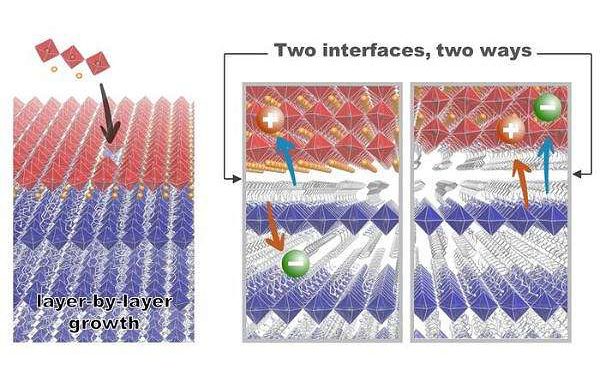by Sarah Collins
Cambridge UK (SPX) Nov 14, 2025
Researchers have achieved a new level of control over the atomic structure of a family of materials known as halide perovskites, creating a finely tuned ‘energy sandwich’ that could transform how solar cells, LEDs and lasers are made.
Due to their remarkable ability to absorb and emit light, and because they are cheaper and can be configured to convert more of the solar spectrum into energy than silicon, perovskites have long been touted as a potential replacement for silicon in solar cells, LEDs and quantum technologies.
However, their instability and durability has, so far, largely limited perovskite devices to the laboratory. In addition, scientists have struggled to precisely control the thickness of perovskite films, and control how different perovskite layers interact when stacked together – an important step in building functional, multi-layered structures.
Now, a team of researchers led by the University of Cambridge has found a new way to grow ultra-thin layers of perovskite films so their atoms line up perfectly, which could enable more powerful, durable and efficient devices.
The researchers used a vapour-based technique to grow three-dimensional and two-dimensional perovskites one layer at a time, which enabled them to control the thicknesses of the films down to fractions of an atom. Their results, reported in the journal Science, could open the door to usable perovskite devices that can be produced at scale, using a process like that used to make commercial semiconductors.
Each layer in a semiconductor ‘sandwich’ does a different job in moving electrons and their positively-charged counterparts – called holes – around and determines how the semiconductors absorb or emit light. Together, the layers act like one-way streets that guide the electric charges in opposite directions, preventing them from bumping back into each other and wasting energy as heat.
In other widely-used semiconductors, such as silicon or newer materials such as gallium nitride, the properties of the individual layers can be fine-tuned using various methods. But perovskites, despite their excellent performance, have so far proved difficult to control in layered devices, due in part to their ‘chaotic’ atomic structure.
“A lot of perovskite research uses solution processing, which is messy and hard to control,” Professor Sam Stranks from the Department of Chemical Engineering and Biotechnology, who co-led the research. “By switching to vapour processing – the same method used for standard semiconductors – we can get that same degree of atomic control, but with materials that are much more forgiving.”
The researchers used a combination of three-dimensional and two-dimensional perovskites to create and control their atomically-tuned stacks, a phenomenon known as epitaxial growth. This fine control let the team directly observe how the light given off by the material changes depending on whether it’s a single layer, a double layer, or thicker.
“The hope was we could grow a perfect perovskite crystal where we change the chemical composition layer by layer, and that’s what we did,” said co-first author Dr Yang Lu from Cambridge’s Department of Chemical Engineering and Biotechnology and Cavendish Laboratory. “It’s like building a semiconductor from the ground up, one atomic layer after another, but with materials that are much easier and cheaper to process.”
The researchers also found they could engineer the junctions between the layers to control whether electrons and holes stayed together or apart – a key factor in how efficiently a material emits light.
“We’ve reached a level of tunability that wasn’t even on our radar when we started,” said Professor Sir Richard Friend from the Cavendish Laboratory, who co-led the research. “We can now decide what kind of junction we want – one that holds charges together or one that pulls them apart – just by slightly changing the growth conditions.”
The researchers found they could tune the energy difference between the layers by more than half an electron volt, and in some cases, extend the lifetime of electrons and holes to over 10 microseconds: far longer than usual.
The team says this level of precision could pave the way for scalable, high-performance devices that use light in new ways, from lasers and detectors to next-generation quantum technologies.
“Changing the composition and performance of perovskites at will – and probing these changes – is a real achievement and reflects the amount of time and investment we’ve made here at Cambridge,” said Stranks. “But more importantly, it shows how we can make working semiconductors from perovskites, which could one day revolutionise how we make cheap electronics and solar cells.”
The research was supported in part by the Royal Society, the European Research Council, the Simons Foundation, and the Engineering and Physical Sciences Research Council (EPSRC), part of UK Research and Innovation (UKRI). Richard Friend is a Fellow of St John’s College, Cambridge. Sam Stranks is a Fellow of Clare College, Cambridge.
Research Report:Layer-by-layer epitaxial growth of perovskite heterostructures with tunable band offsets
Related Links
University of Cambridge
All About Solar Energy at SolarDaily.com
















